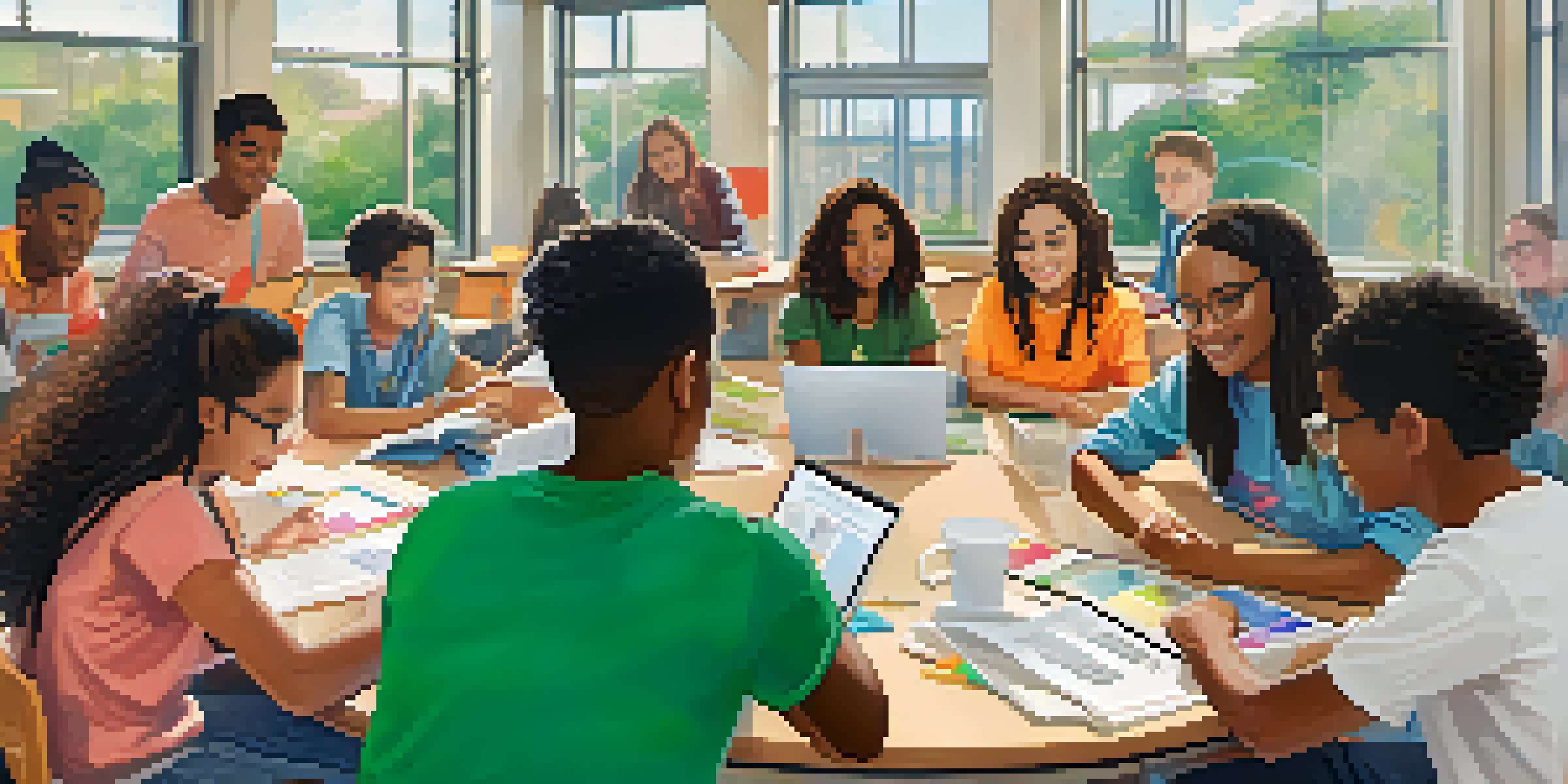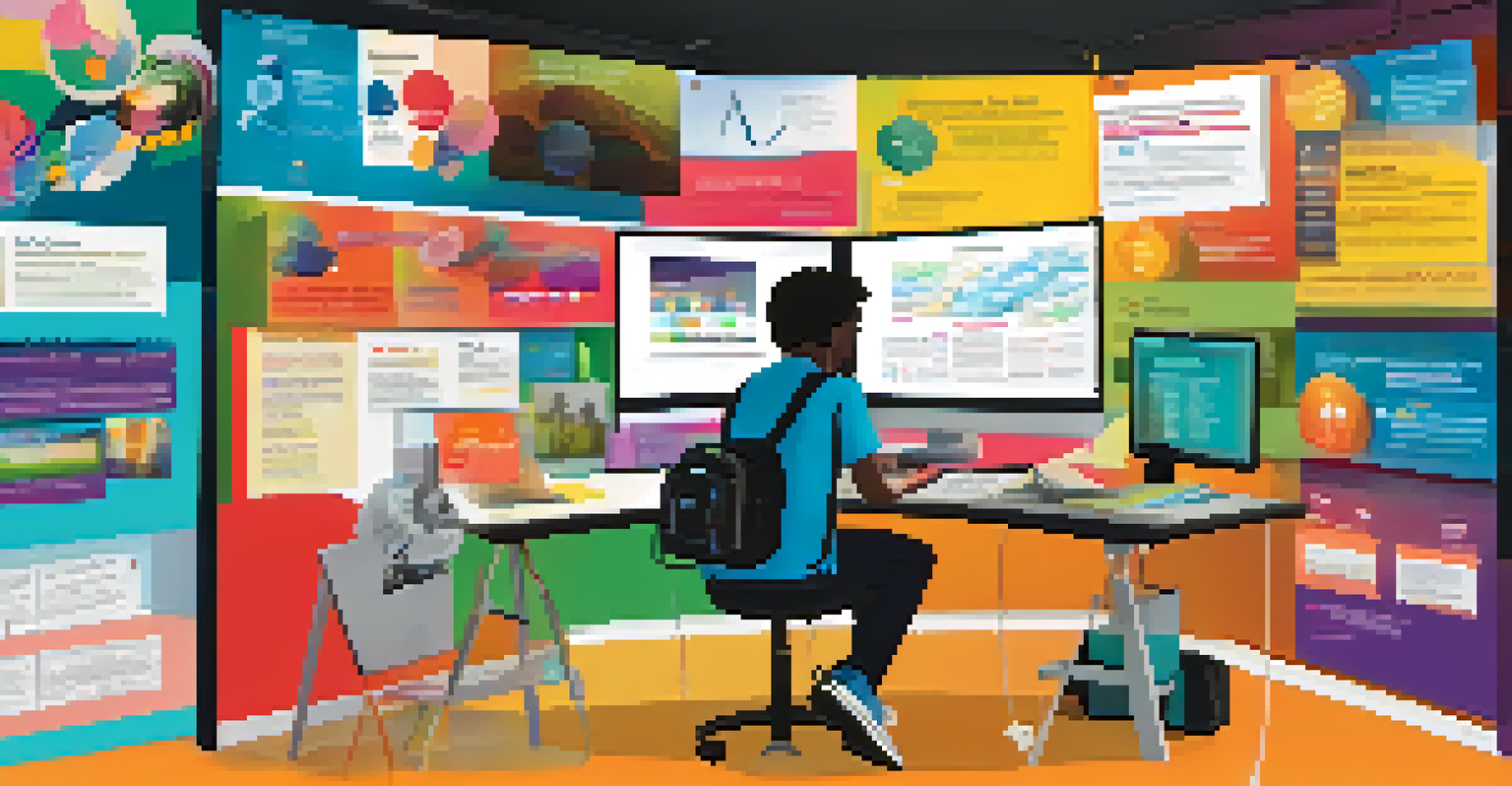Using Social Media to Foster Engagement in Online Education

The Role of Social Media in Online Learning Environments
Social media has transformed the way we communicate and learn. In online education, platforms like Facebook, Twitter, and Instagram can create vibrant communities where students connect with peers and instructors. This interaction fosters a sense of belonging and collaboration, which is often missing in traditional online settings.
Social media is about the people. Not about your business. Provide for the people and the people will provide for you.
By integrating social media into the learning process, educators can provide students with additional resources, updates, and feedback. This not only keeps students informed but also encourages them to engage actively with course content. When students feel connected, they are more likely to participate and share their ideas.
Moreover, social media can serve as a valuable tool for professional networking. Students can create connections with industry professionals, alumni, and fellow learners, opening doors to future opportunities. This aspect of social media enhances the educational experience, making it more dynamic and relevant.
Creating an Interactive Learning Community on Social Media
Building an interactive learning community is essential for student engagement. Educators can create dedicated groups on platforms like Facebook or LinkedIn, where students can discuss topics, ask questions, and collaborate on projects. This sense of community can be crucial for motivation and support.

Encouraging students to share their experiences and insights on these platforms fosters peer learning. When students see their classmates engaging in discussions, they are more likely to contribute their own thoughts. This organic interaction can lead to deeper understanding and retention of course material.
Social Media Enhances Learning
Integrating social media in education fosters community, collaboration, and engagement among students.
Furthermore, educators can use social media to host live Q&A sessions or discussions, making learning feel more immediate and personal. These interactions can help demystify complex topics and allow students to seek clarification in real-time, enhancing the overall learning experience.
Leveraging Multimedia Content for Engagement
One of the most engaging aspects of social media is its ability to share multimedia content. Educators can post videos, infographics, and podcasts that make learning more dynamic and appealing. For instance, a short video summarizing a complex theory can often resonate more than a textbook chapter.
Technology is best when it brings people together.
Encouraging students to create their own multimedia content can also boost engagement. Assignments that require students to produce videos or podcasts about course topics can lead to more active learning experiences. This hands-on approach allows students to express their understanding creatively.
Moreover, sharing this content on social media can spark conversations and encourage feedback from peers. When students see their work appreciated and discussed, it reinforces their learning and builds confidence in their capabilities.
Using Polls and Surveys to Drive Participation
Polls and surveys are excellent tools for gauging student interest and opinions. By regularly posting these on social media, educators can engage students in meaningful ways. It not only makes students feel valued but also offers insights into their preferences and learning needs.
For example, a quick poll asking students which topics they find challenging can inform future lessons. This direct feedback loop empowers students to take an active role in their education, fostering a sense of ownership over their learning journey.
Interactive Communities Boost Engagement
Creating dedicated social media groups encourages students to share insights and collaborate, enhancing their learning experience.
Additionally, sharing the results of these polls can lead to discussions and debates, further enhancing engagement. When students see that their voices matter, they are more likely to participate actively and contribute to the learning environment.
Showcasing Student Achievements on Social Media
Celebrating student achievements can significantly boost morale and engagement. By highlighting accomplishments on social media, educators can create a positive atmosphere that encourages all students to strive for success. Whether it's sharing a student's project or acknowledging their participation, recognition matters.
This public acknowledgment not only motivates the recognized student but also inspires their peers. When students see their classmates celebrated, they may feel encouraged to participate more fully in their own learning experiences.
Moreover, showcasing achievements can foster a sense of community pride. Students may feel more connected to their cohort and the overall program when they see collective accomplishments being celebrated.
Incorporating Gamification through Social Media
Gamification in education involves using game-like elements to enhance learning experiences. Social media can be a useful platform for implementing these strategies. By creating challenges or competitions tied to course content, educators can spark excitement and engagement among students.
For example, a challenge where students earn points for participating in discussions or completing assignments can create a fun, competitive atmosphere. This approach can motivate students to engage with the material and with one another, making learning feel less like a chore.
Celebrating Achievements Inspires Students
Showcasing student accomplishments on social media boosts morale and motivates others to participate actively in their education.
Additionally, sharing these gamified experiences on social media can foster a sense of community and encourage participation. When students can see their peers engaging in friendly competition, they may be more inclined to join in and contribute.
Maintaining Boundaries and Professionalism Online
While social media offers numerous benefits for engagement, it's crucial to maintain professionalism and boundaries. Educators and students alike should be mindful of the content they share and how they interact online. Establishing clear guidelines for communication can help create a respectful learning environment.
For instance, educators might encourage students to use professional language and avoid sharing personal information. This creates a safe space for everyone to engage while upholding the standards of online behavior.

Moreover, maintaining these boundaries can prevent misunderstandings and conflicts. When both educators and students understand the expectations, they can focus on creating a productive and enjoyable learning experience.